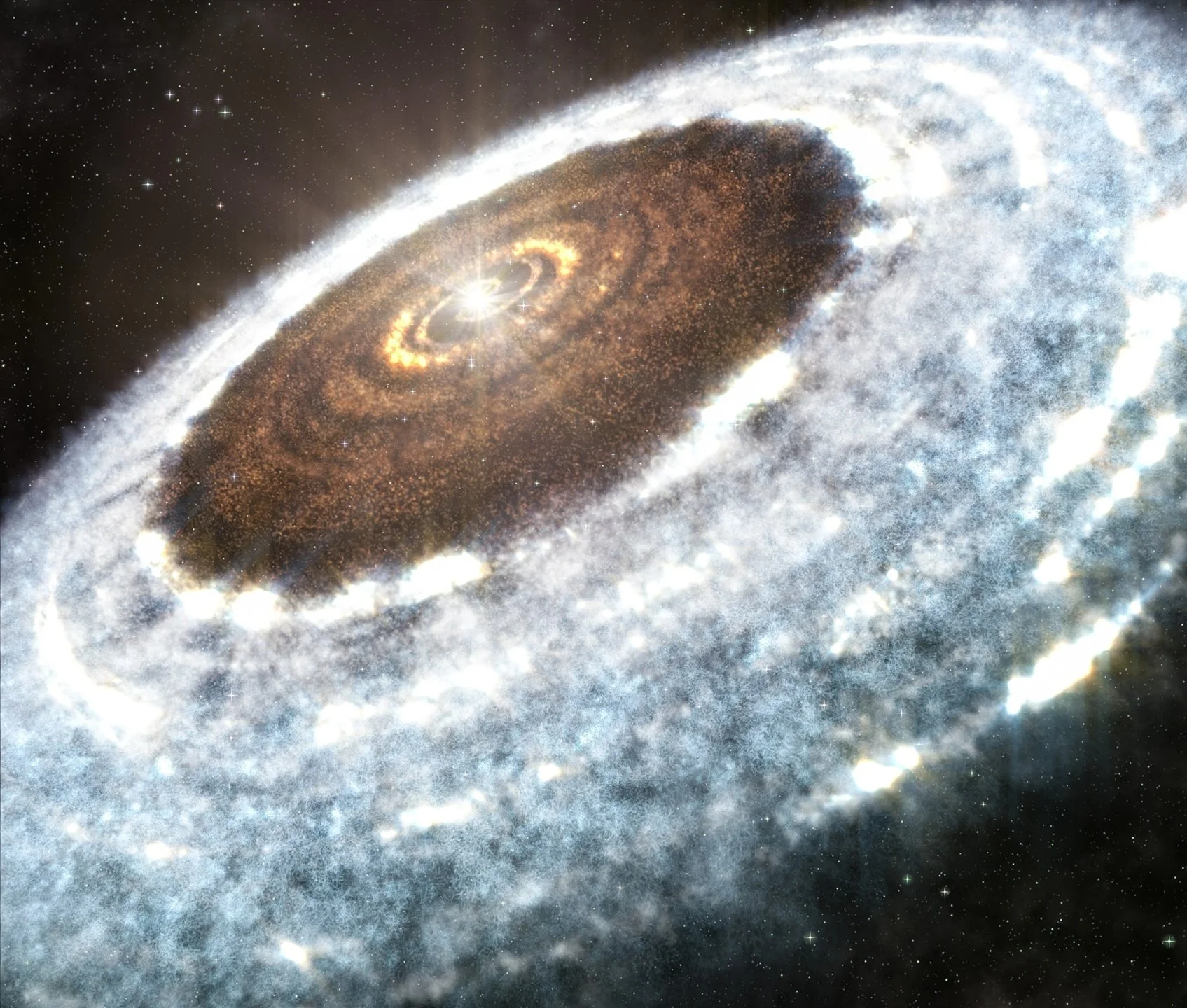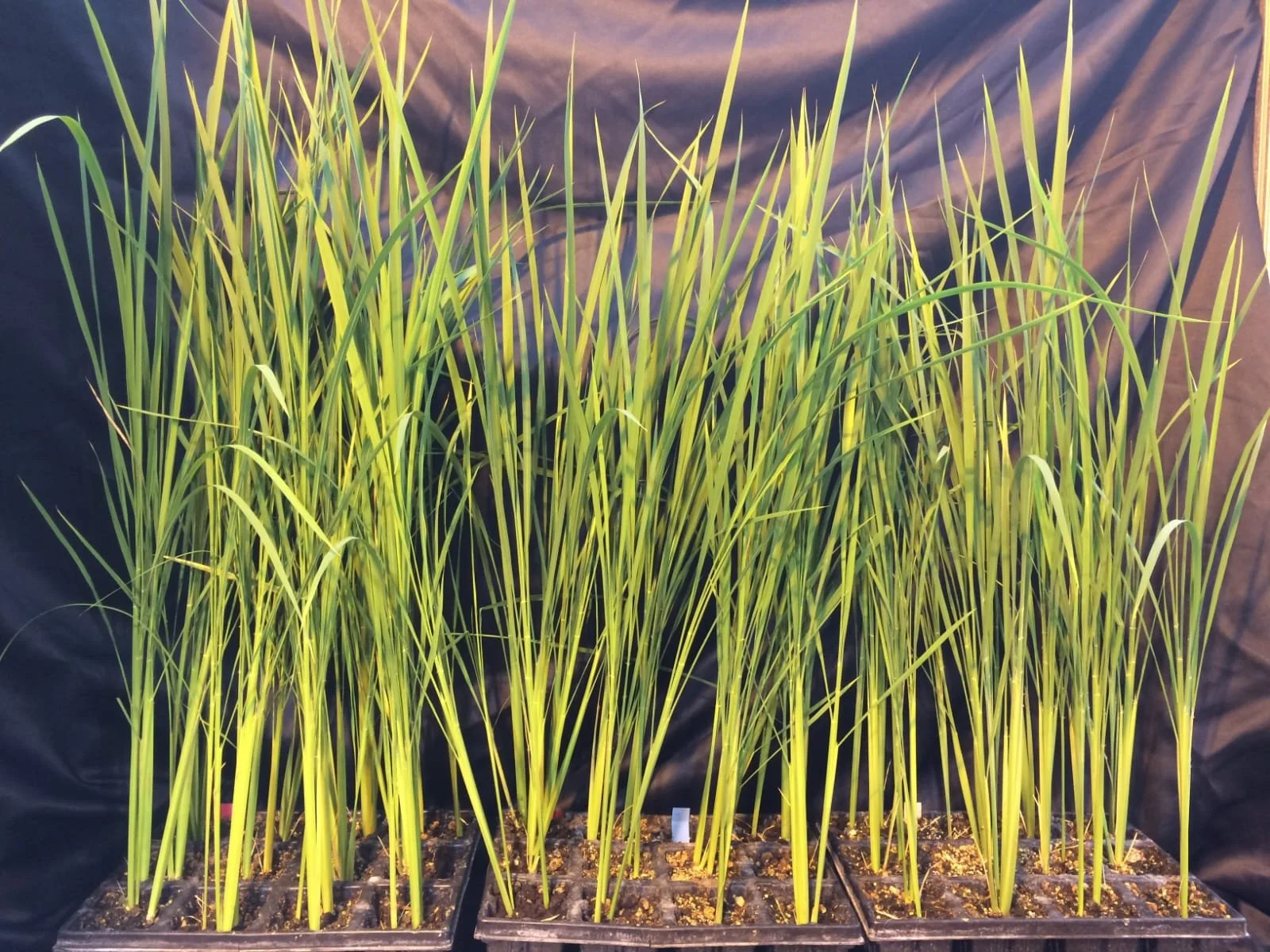Astronomers have directly observed a planet in the act of forming around a youthful analogue of the Sun, offering a rare look at how giant worlds assemble. The object, dubbed WISPIT 2b, appears to be a Jupiter-class gas giant roughly 5 million years old—an astronomical newborn.
The discovery, made by researchers from Leiden University, the University of Galway, and the University of Arizona, is detailed in The Astrophysical Journal Letters.
Image of a dusty disk around a young star. A small dot of light, circled in white, reveals a newborn planet—likely a gas giant about five times Jupiter’s mass—captured in near-infrared by ESO’s Very Large Telescope. - (Image Credit: C. Ginski/R. van Capelleveen et al.)
A quick-look survey that paid off
The planet emerged from a campaign designed to rapidly “triage” many infant star systems. Instead of spending long stretches on a single target, the team took very short snapshots of numerous young stars, searching for telltale structures: narrow rings, gaps, or faint points of light that might betray developing planets. One target immediately stood out—not just for a bright companion, but for a striking, multi-ringed disk whose carved gaps hinted that something massive was at work.
Follow-up imaging at higher sensitivity confirmed a compact source embedded in a disk gap. By tracking its motion against background stars, the researchers showed that the source moves with the system—evidence that it is gravitationally bound to the star rather than an unrelated object along the line of sight.
WISPIT 2b shows up strongly in near-infrared light, the wavelengths where young gas giants glow with leftover heat from their birth. A complementary detection in visible light—made with a custom instrument—pins down a specific colour associated with gas falling onto the planet. Together, the measurements indicate not just the presence of a young giant world, but that it is actively accreting material to build its atmosphere.
Why this system matters
Confirmed planets caught this early around Sun-like stars are exceptionally uncommon; WISPIT 2b is only the second such case reported. It is also the first unambiguous planet found inside a clearly multi-ringed disk, creating a clean testbed for theories of how planets sculpt their birth environments—and how those environments, in turn, regulate planetary growth.
The star’s disk is expansive, stretching to roughly 380 astronomical units (about 380 times the Earth–Sun distance). Its neatly defined rings and gaps, aligned with the planet’s position, make the system a natural laboratory for studying how giant planets clear paths and influence the architecture of emerging planetary systems.
Student-led effort, international collaboration
The project was led by Richelle van Capelleveen, a PhD researcher at Leiden University, with co-lead contributions from a graduate team at the University of Galway. Van Capelleveen called the discovery “an amazing experience,” noting that the system sits in a little-studied association of young stars and turned out to be far more spectacular than anticipated.
At Galway, three Physics students specializing in Astrophysics—Chloe Lawlor, Jake Byrne and Dan McLachlan—co-authored the study. Their work helped carry the analysis across the finish line, from the initial flag raised by the snapshot survey to the deeper observations that confirmed the planetary companion.
A companion paper led by Professor Laird Close at the University of Arizona provides the visible-light confirmation that WISPIT 2b is still drawing in gas, strengthening the case that astronomers are witnessing a world in the midst of assembly rather than a fully formed planet simply lurking within the disk.
A clearer view of planet formation
Direct images of forming planets remain rare and technically challenging, but each new example fills in a critical part of the story: how quickly giant planets come together, how they carve the rings and gaps seen in young disks, and why mature planetary systems turn out so diverse. With its youth, Sun-like host, and crisply structured disk, the WISPIT 2 system is expected to become a benchmark for testing models of planet–disk interactions and the timeline of giant planet accretion.
As facilities like the VLT continue to refine high-contrast imaging and narrow-band techniques, astronomers anticipate that more targets like WISPIT 2b will come into focus—each one a snapshot of planetary systems in the making.
If you are interested in more details about the underlying research, be sure to check out the paper published in The Astrophysical Journal Letters, listed below.
Sources, further reading and more interesting articles on the subject of Space & Exploration:
Wide Separation Planets in Time (WISPIT): Discovery of a Gap Hα Protoplanet WISPIT 2b with MagAO-X - (The Astrophysical Journal Letters)
Billions of years ago, Jupiter might have swallowed a planet ten times larger than Earth! - (Universal-Sci)
Lunar Soil Shows Potential to Sustain Life on the Moon - (Universal-Sci)
Astronomers Discover a Planet in the Middle of a Dramatic Transformation - (Universal-Sci)
Hope for Finding Life on Mars: A Breakthrough in Detecting Ancient Organisms - (Universal-Sci)
Too busy to follow science news during the week? - Consider subscribing to our (free) newsletter - (Universal-Sci Weekly) - and get the 5 most interesting science articles of the week in your inbox
FEATURED ARTICLES:






